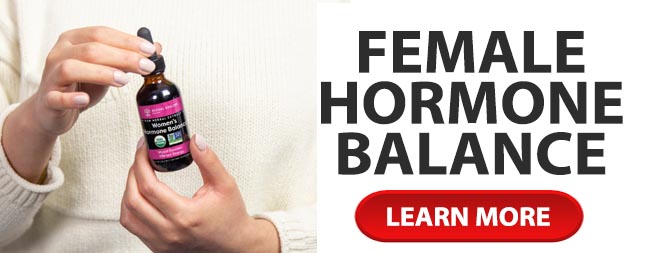A breast cyst is one of those findings a radiologist may see on a mammogram. These cysts can also be felt when doing a breast self examination. They will feel smooth and a bit squishy, in other words they will have some \”give\” to them much like water balloon. This is because they are benign, meaning noncancerous, and filled with fluid residing somewhere in the breast tissue. They are not usually associated with breast cancer but may be tender or painful if it is large. They tend to become large during perimenopause. (1)
Sometimes a woman will find a breast cyst on self-examination and at other times a mammogram may show a dense area of tissue. The radiologist will see and determine if these masses are solid or fluid filled. More often, further evaluation must be done in order to determine if it is the breast cysts or a solid mass that is being examined.
If the radiologist believes that it may be a cyst then the next step is to perform an ultrasound. This is a test in which sound waves are sent through the breast tissue and are bounced back to the machine. Sound waves will pass through a fluid filled cysts but a solid mass will reflect the sound waves and show a different image on the ultrasound.
Women can have one or many different breast cysts at any time during her life. They are more common in women who are in their 30s and 40s and often disappear after menopause unless the woman is taking hormone therapy. Thankfully, unless the cyst is large and painful, they do not require any treatment. If a woman finds the cyst is too painful or uncomfortable then the fluid can be drained using a needle aspiration that can ease the symptoms.
Each breast contains between 15 and 20 different lobes of glandular tissue that are arranged like the petals on a daisy. These lobes are further divided into smaller ones that produce milk during pregnancy and breast-feeding. Supporting this network is a deep layer of connective tissue. Breast cysts will develop when there is an over growth of the glands and connective tissue that eventually block the ducts and cause them to fill with fluid. (2)
Doctors differentiate breast cysts by their size. Micro-cysts are too small to feel and can be seen during imaging studies such as a mammogram or an ultrasound. Macro cysts are large enough to be felt and can actually grow up to 2 inches in diameter causing breast pain or discomfort. The exact reason why these cysts develop is still not known, but there is some evidence to suggest that excessive estrogen can play a role.
Breast cysts can occur in up to 50% of women who are of reproductive age. Only 7% of these women will experience macro cysts and the remaining 43% will experience micro-cysts, too small to be felt. Less than 5% of breast cysts occur in women over 60.
A breast cyst is not the same as fibrocystic breast changes which are mostly thickening of areas. Approximately 40% of the women will have a recurrence of breast cysts after treatment and researchers have found that the younger a woman is when she was diagnosed with breast cysts the more likely it is that she will have a recurrence.
Normal tissue in a healthy woman may often feel lumpy or nodular. However, if you find a change in your breast tissue, or a lump that seems to have grown, make an appointment with your physician to get it evaluated.
Your physician will perform a clinical examination within the office and look for other problems that may also be present. Than your primary care physician will ask you questions about when you first noticed the lump, whether the size or texture has changed and if you have any pain associated with it. A physical exam is not enough to tell whether or not a lump is a cyst or something more serious. Your physician will prescribe either an ultrasound or a mammogram depending upon the date of your last mammogram.
A mammogram will be used to locate the lump within the breast tissue and determine whether or not there are other lumps too small to be palpate it within the breast. An ultrasound will help determine whether or not the lump is fluid filled or solid. A fluid filled area usually indicates a cyst while a solid mass is more likely a fibroadenoma. (3)
If there is any question about the diagnosis of these cysts, or if there is enough pain or discomfort that treatment is recommended, the physician will do a fine needle aspiration in the office to withdraw the fluid. If the fluid is bloody the laboratory may be asked to test it. If there is a lack of fluid or if the lump does not disappear after aspiration it may suggest that at least a portion of it is solid. (4,5)
Finding a cyst in the breast is a common occurrence for women. If you find an unusual change in the texture or feel of your breast during a self-examination it is important to seek the advice of your gynecologist or primary care physician as soon as possible.
(1) New South Wales Breast Cancer Institute: What is a Breast Cyst
http://www.racgp.org.au/afp/200504/200504nswbci.pdf
(2) Wexner Medical Center: Anatomy of a Breast
http://medicalcenter.osu.edu/patientcare/healthcare_services/breast_health/anatomy_of_the_breasts/Pages/index.aspx
(3) MayoClinic: Breast Cysts
http://www.mayoclinic.com/health/breast-cysts/DS01071
(4) FamilyDoctor.org: Breast Cyst Aspiration
http://familydoctor.org/familydoctor/en/drugs-procedures-devices/procedures-devices/breast-cyst-aspiration.html
(5) American Family Physician: Breast Cyst Aspiration
http://www.aafp.org/afp/2003/1115/p1983.html

